How to: Making Artificial Egg Laying Strips
by Jennifer Macke
Most newts lay their eggs on aquatic plants. There are several reasons why you might want to provide an artificial substrate for egg laying.
- Clear strips make it much easier to find the eggs and to follow their development.
- You can cut the strips off without destroying live aquarium plants.
- Some newt species actually prefer plastic strips to live plants. In my experience, Triturus karelinii will consistently use strips in preference to plants. Notophthalmus and Cynops species that I have tried did not use the plastic strips if plants were available.
- If you want to ship your eggs to someone else, plastic strips make the job easier. The strips will not decay during transport.
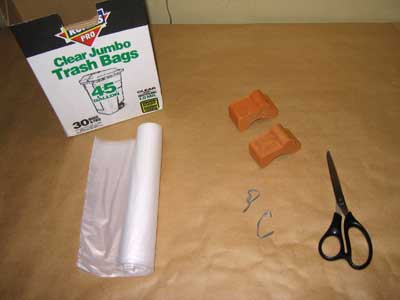 |
Materials needed:
|
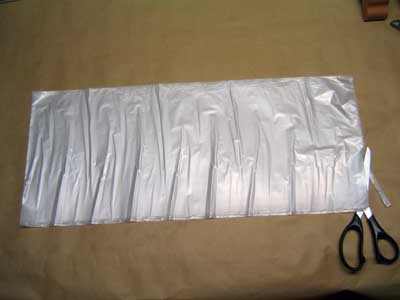 |
Cut a suitable length of material. Leave it folded. Cut off the end of the bag that is sealed shut (the bottom of the trash bag). |
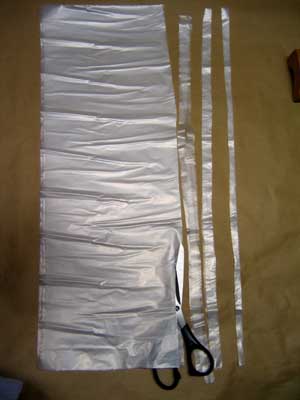 |
Cut into strips. |
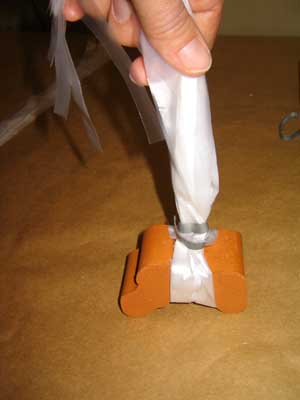 |
Wrap a cluster of strips around the heavy object and secure them in place. Clay pot feet can be bought cheaply at garden stores, but rocks can also be used. |
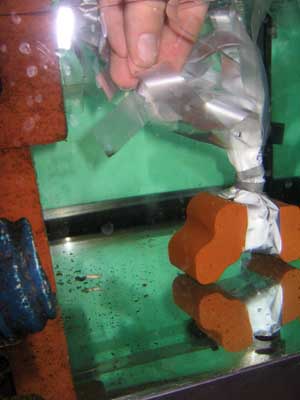 |
Place in the water. The strips will stick together. Use your hand to separate into individual strands. |
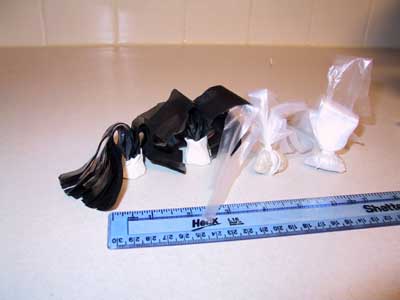 |
Examples of egg laying strips made with other materials. Left: black plastic attached with aquarium epoxy putty. Right: clear strips attached to rocks with rubber bands. |
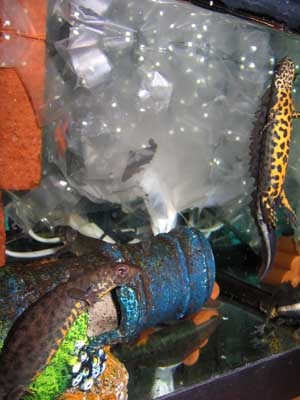 |
Finished product, with eggs and proud parents. |
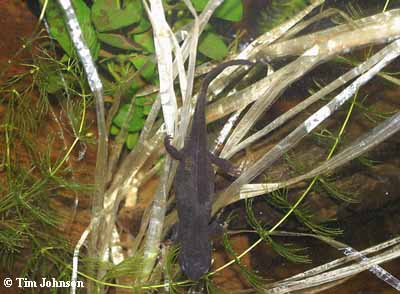 |
Female Cynops ensicauda preparing to lay eggs. These strips are strands of plastic packaging tape. |
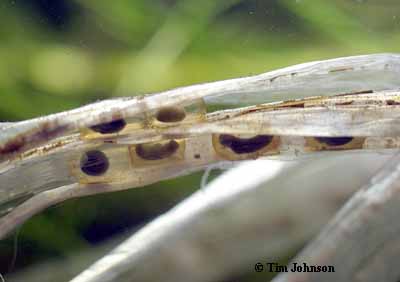 |
Cynops ensicauda eggs. |
